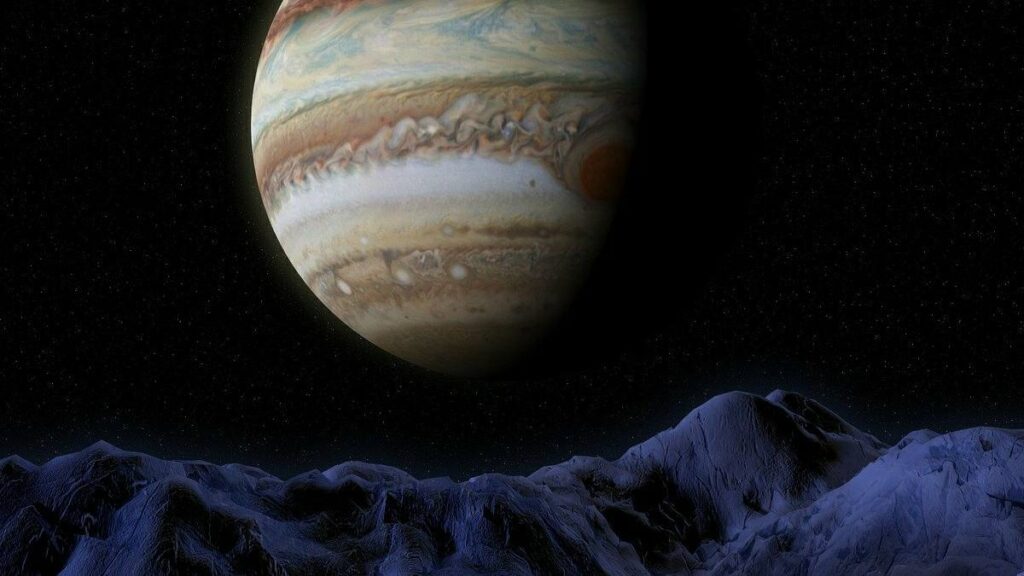Jupiter shines during its closest approach to Earth

Jupiter is the largest planet in the solar system and the fifth planet from the Sun. After the Moon and Venus, Jupiter is the brightest natural object in the night sky. Jupiter will look greater and brighter than it has in over fifty years, Monday night as the enormous gas giant will be at its nearest highlight Earth – so close truth be told that few of its moons likewise will be strikingly recognizable. Jupiter can be seen directly opposite the sun on Monday September 26, 2022. Skywatchers can see the solar system’s largest planet in incredible detail during an event known as “opposition”.
As per NASA, the gigantic gas planet will come into view as it reaches opposition, meaning it rises in the east as the sun sets in the west, a planetary move that happens every 13 months. What makes this occasion exceptional is that Jupiter’s orbit has not brought the gas giant this near Earth since 1963, making the current year’s methodology a remarkable chance to see the greatest object in the solar system.
During the opposition Jupiter, Earth, and the sun are adjusted so that the two planets are on a similar side of the star with Earth sitting between these two huge bodies. As the gas giant reaches opposition while ascending from the east simultaneously the sun sets in the west, and it will likewise be at its closest approach to Earth, known as “perigee”. This nearest approach will carry Jupiter to around 367 million miles from Earth, the gas giant’s nearest to our planet since 1963.
During this event, the planet will be in the Pisces constellation and be noticeable for the greater part of the night, rising when the sun sets and vanishing when the sun rises. You can watch an online webcast of Jupiter at resistance on Tuesday (September 27, 2022) starting at 4:30 p.m. EDT (2030 GMT) because of the Virtual Telescope Project. Saturn and Mars will likewise be discernible on Monday night, and on the off chance that you have binoculars or a little telescope helpful, you’ll have the option to see three or four of Jupiter’s Galilean moons. Jupiter has 53 moons that have been given official names by the International Astronomical Union, yet upwards of 79 moons have been identified altogether, as per NASA. The four that ought to be noticeable are the greatest and brightest and are called Io, Europa, Ganymede and Callisto — or the Galilean satellites, which got their name after Italian space expert Galileo Galilei previously noticed them in 1610. There’s likewise an opportunity you could possibly see Jupiter’s bands in the event if you have a steady mount or stand.
As per In-The-Sky.org, Jupiter will be visible overnight from New York between 7:33 p.m. EDT (2333 GMT) on September 26, 2022, and 06:08 a.m. (1008 GMT) on Tuesday (September 27, 2022). The planet will show up from a height of 7 degrees over the eastern horizon moving to 49 degrees over the southern horizon (its highest point ) at 12:51 a.m. EDT (0451 GMT) on Tuesday (September 27, 2022) morning prior to sinking underneath the western horizon. For skywatchers living in New York City, The Gothamist has gathered a few hints on the best way to see the planet from New York City explicitly.
While the detachment of over of 350 million miles between Earth and Jupiter which might appear everything except ‘close,’ the best distance between Earth and Jupiter is around 600 million miles (960 million km). Jupiter is around 484 million miles (778 kilometers) from the sun, more than five times the typical distance between the Earth and the star. This monstrous separation from the sun implies that Jupiter’s close approach will just have a little effect on its size in the night sky.
Assuming you miss Jupiter at opposition this year, the following opportunity to witness this galactic occasion will be on November 3, 2023.

